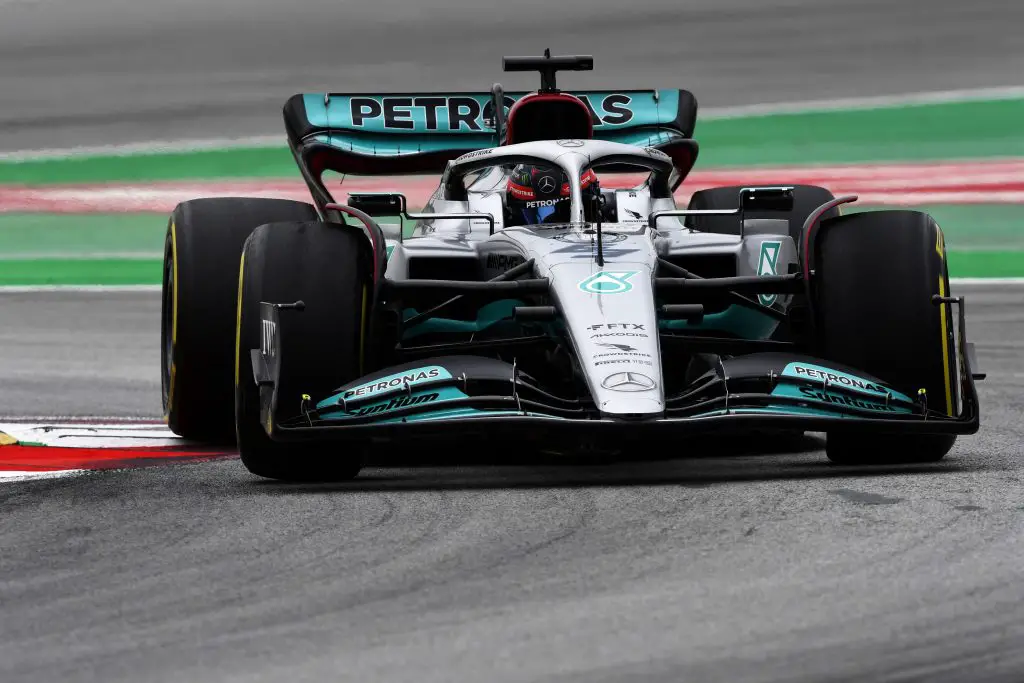Porpoising is one of the most talked-about terms after 2022 F1 testing
The 2022 F1 season is less than a month away but the entire paddock has been talking about porpoising.
All the teams have had to redesign their cars ahead of the new season thanks to the fresh regulations from the FIA.
The tyres are different, the wings are different, the front noses are different and even the floorboards are different.

This overhaul is expected to allow better racing, even though the times after the first test days aren’t the same as last year.
Nevertheless, new regulations always throw up certain unexpected results, and one of them was how the cars were moving about when going down the straights.
The car rocks up and down as it bounces down the straight. This is akin to what happens to the car if it is too close to the ground. The driver and car move about together, but that is because the car scrapes the road.
This is, however, a different story altogether. The car is moving about due to aerodynamics and well, it is tough on the driver. The moving about also affects air flow and this porpoising could be one reason why times are not as fast as they should be.
What is porpoising in F1?
Everyone has been trying to explain what exactly porpoising is and it is all down to the aerodynamic effect of the new cars.
As shared by the F1 site, this is how porpoising is being caused due to the new wings and aero boards.
“The cause is an aerodynamic one, where either the leading edge of the floor, or perhaps the front wing, is pushed ever closer to the ground as the downforce acting upon it increases. The closer to the ground it gets, the more powerful the ground effect is, as the air rushes ever-faster through the shrinking gap.
“This increases the pressure difference between the underside and upper surfaces, so increasing the downforce yet more – until it stalls. At which point, much of the load is suddenly released, the front of the car rises up suddenly in response – which allows the ground effect to begin working again!”
Basically, the new wing causes so much downforce that more air rushes into the underneath of the car.
The downforce keeps increasing as more air is sucked in and then suddenly it gets released and the car moves up again.

However, since the cars are moving at such great speed, the ground effect (sucking of the air thanks to the car’s floorboard) starts again and then the pressure gets released again.
This keeps happening down the quick straights and we see the cars bounce up and down.
The update from the F1 site also mentioned that none of the teams had expected this after simulation and even wind tunnel testing did not bring up porpoising enough.
What happens next?
With testing limited there isn’t a lot of time for the teams to fix this up. However, most F1 teams have a huge research and development department, so they will be burning the midnight oil to find a solution.
This effect was also a menace during the late 1970s and early 1980s and teams were able to find a solution to all this.
The second testing location is Bahrain and it takes place between 10-12 March. With the season opener in Australia on 18 March, teams won’t have a lot of time to deal with this porpoising issue.
The team that finds the best solution to this might end up getting a huge boost at the start of the season as well.
More Formula One news:
- Lewis Hamilton doesn’t support IOC’s decision on Black Lives Matter gear during Olympics
- Max Verstappen left surprised as he reaches 100 race milestone with Red Bull
- Damon Hill left in awe after Lewis Hamilton racks up 100 poles in F1 ahead of 2021 Spanish GP
Follow our dedicated Formula One page for instant Formula One news and updates

